Rights Breached, Responsibilities Neglected: How the My Lai Massacre Exposed the Ethical Issues of the Vietnam War
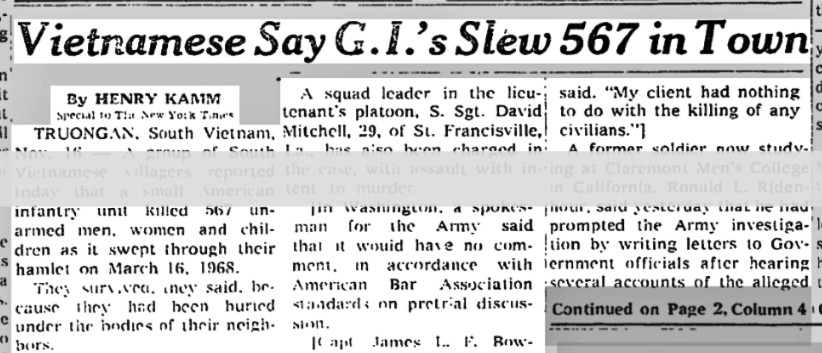
"Vietnamese Say G.I.'s Slew 567 in Town" The New York Times
How The Massacre Was Exposed
In March 1969, letters from ex-soldier Ronald Ridenhour to U.S. officials launched investigations on the My Lai Massacre.
“Ron Ridenhour's letter to Congress, March 29, 1969.” Ridenhour Prizes
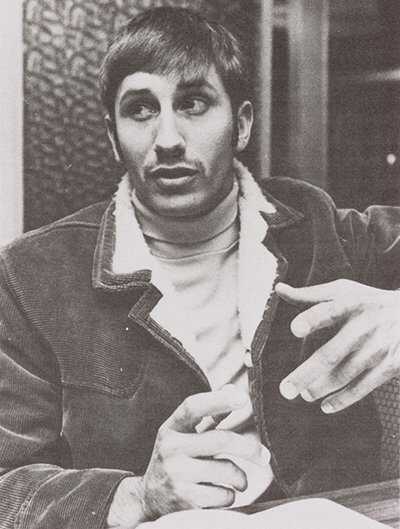
“1969 Press Photo Ronald Ridenhour, ex GI triggered investigation in Vietnam” Associated Press
“While the massacre at My Lai was the logical extension of the smaller but far more numerous day-to-day atrocities I had witnessed as a helicopter door gunner, hearing the story come from the lips of someone I knew and trusted, someone who’d been there, who saw it and participated in it, staggered me.”
-Ronald L. Ridenhour, 1993 interview
“I wanted to get those people. I wanted to reveal what they did. My God, when I first came home, I would tell my friends about this and cry-literally cry.”
-Ronald L. Ridenhour, 1993 interview
Through these investigations, the Army uncovered the war crimes.
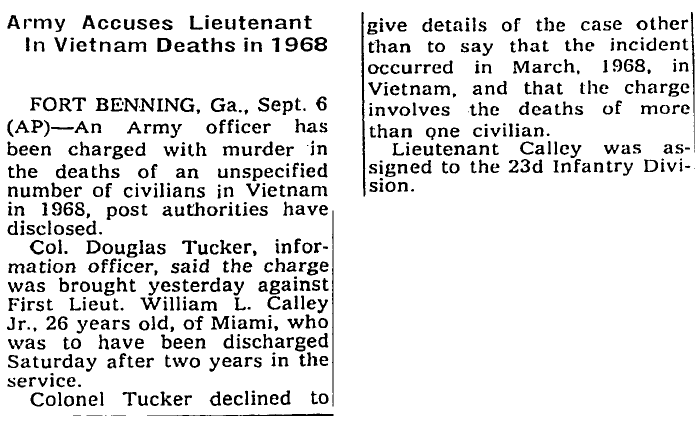
“Army Accuses Lieutenant In Vietnam Deaths in 1968” The New York Times/Associated Press
However, Calley was only secretly charged. The details were obscured and hidden.
“The Army kept the investigation classified. They had Calley under house arrest, but the public didn’t know for over a year. The silence was deafening.”
-Seymour Hersh, investigative journalist
"The press information officer declined to give details of the case other than to say that the incident occurred in March, 1968, in Vietnam, and that the charge involves the deaths of more than one civilian.”
-New York Times, September 9, 1969
Seymour Hersh

Dispatch News Service, Seymour M. Hersh
Groundbreaking investigations by reporter Seymour Hersh exposed the massacre to the public.
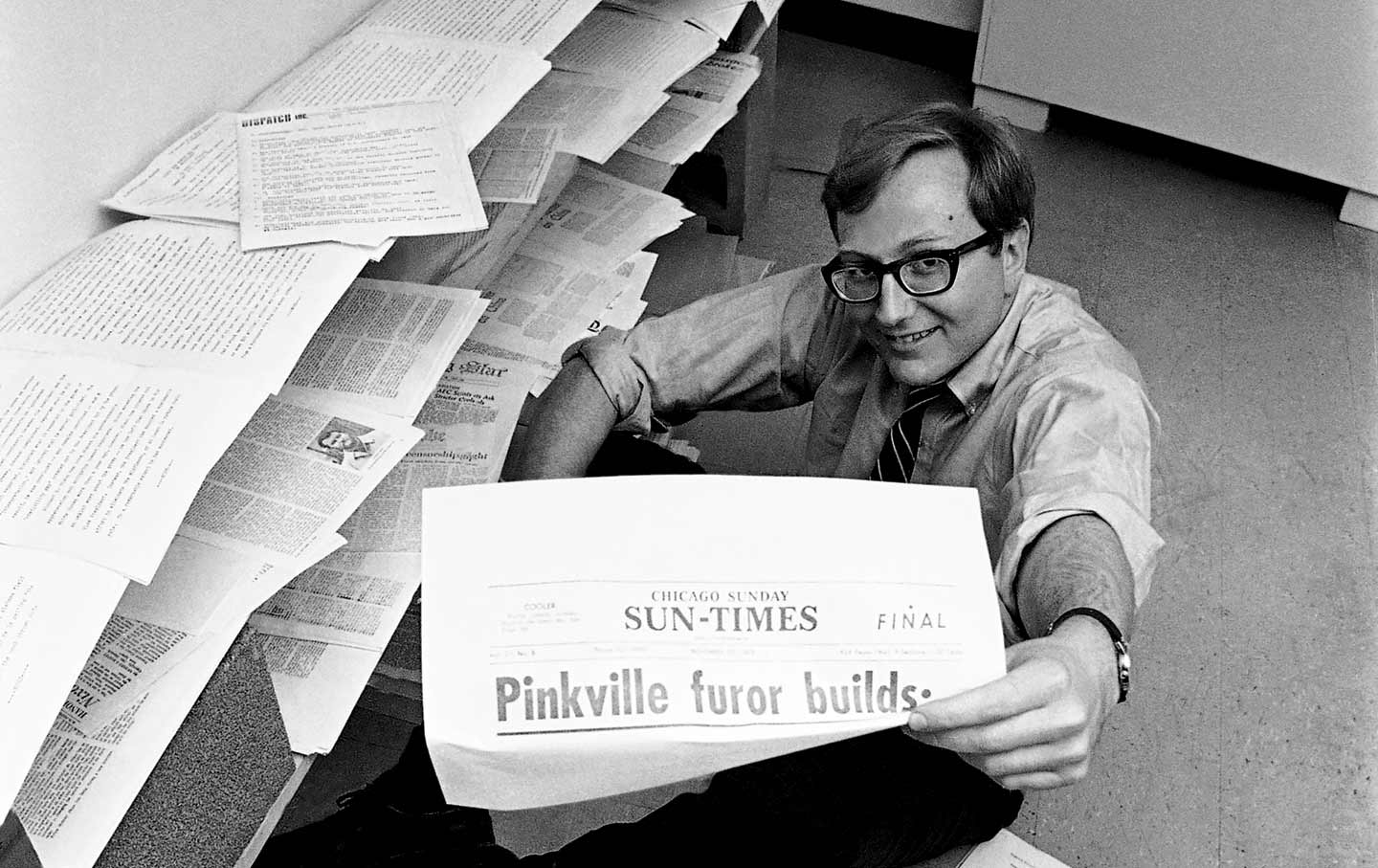
“Seymour Hersh in 1970 at Dispatch News Service Offices.” AP Photo
I was adamant because I knew from my years of being immersed in the war, and in the racism and fear that drove it, that the mass murder of civilians was far more common than most people suspected—and that it was very seldom prosecuted. We now had a case where the Army itself was drawing a line and saying, in essence, that there were some actions that could not be overlooked.
-Seymour Hersh, in his memoir, “Looking for Calley, How a young journalist untangled the riddle of My Lai”
“The story did not break in the press until reporter Seymour Hersh got a story on it published in thirty U.S. papers on November 13. Hersh’s first article gave an overview of the charges against Lieutenant Calley of murdering 109 Vietnamese civilians, and discussed what was known of the incident.
-The New Yorker, 1972
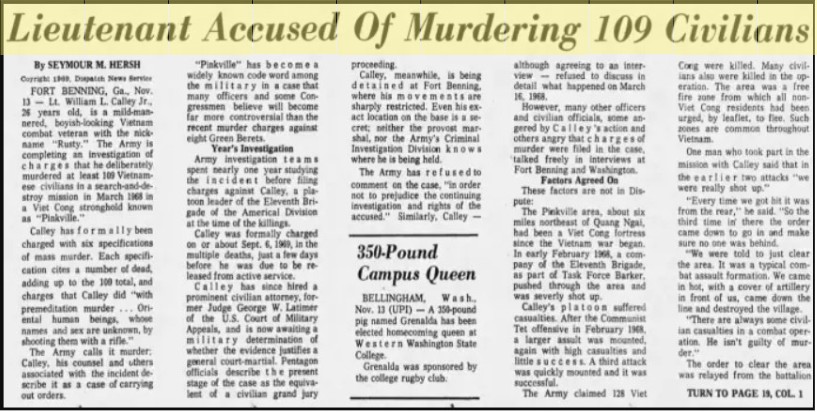
“Lieutenant Accused of Murdering 109 Civilians.” Dispatch News Service
Ronald Haeberle
The Cleveland Plain Dealer followed by publishing Army photographer Ronald Haeberle’s gruesome photographs of the massacre, which were monumental for the case.
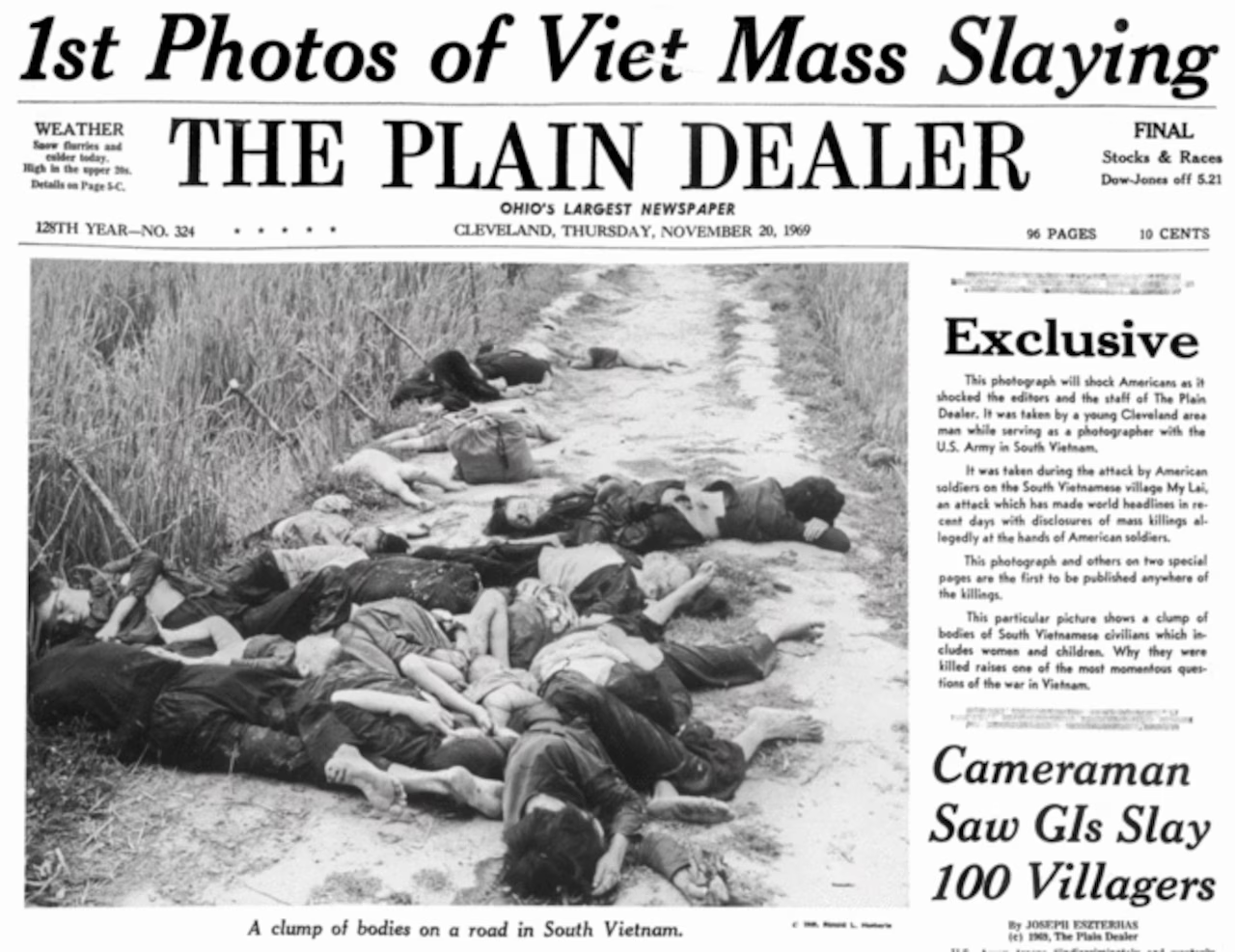
"1st Photos of Viet Mass Slaying" The Cleveland Plain Dealer
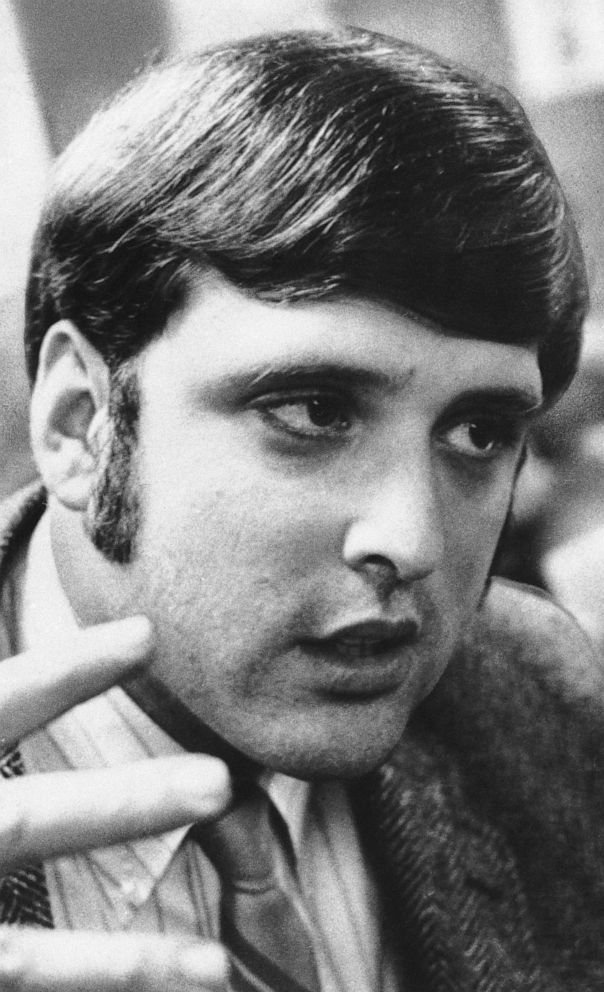
"Ronald L. Haeberle, 28, a former army photographer in Vietnam, Nov. 22, 1969." AP Photo
"No one believed it. Bill Ware, the [Plain Dealer's] executive editor, called; he wasn't sure if we should go with it. Almost simultaneously, this kid comes forward with these pictures -- Haeberle's photographs legitimized the story."
-Mike Roberts, the Plain Dealer Washington bureau reporter at the time of the exposure
"It was such a horrific idea that American troops could do this, to women and children, I thought it was amazing we had these -- such a big story out of Vietnam."
-Richard Conway, a retired Plain Dealer photographer
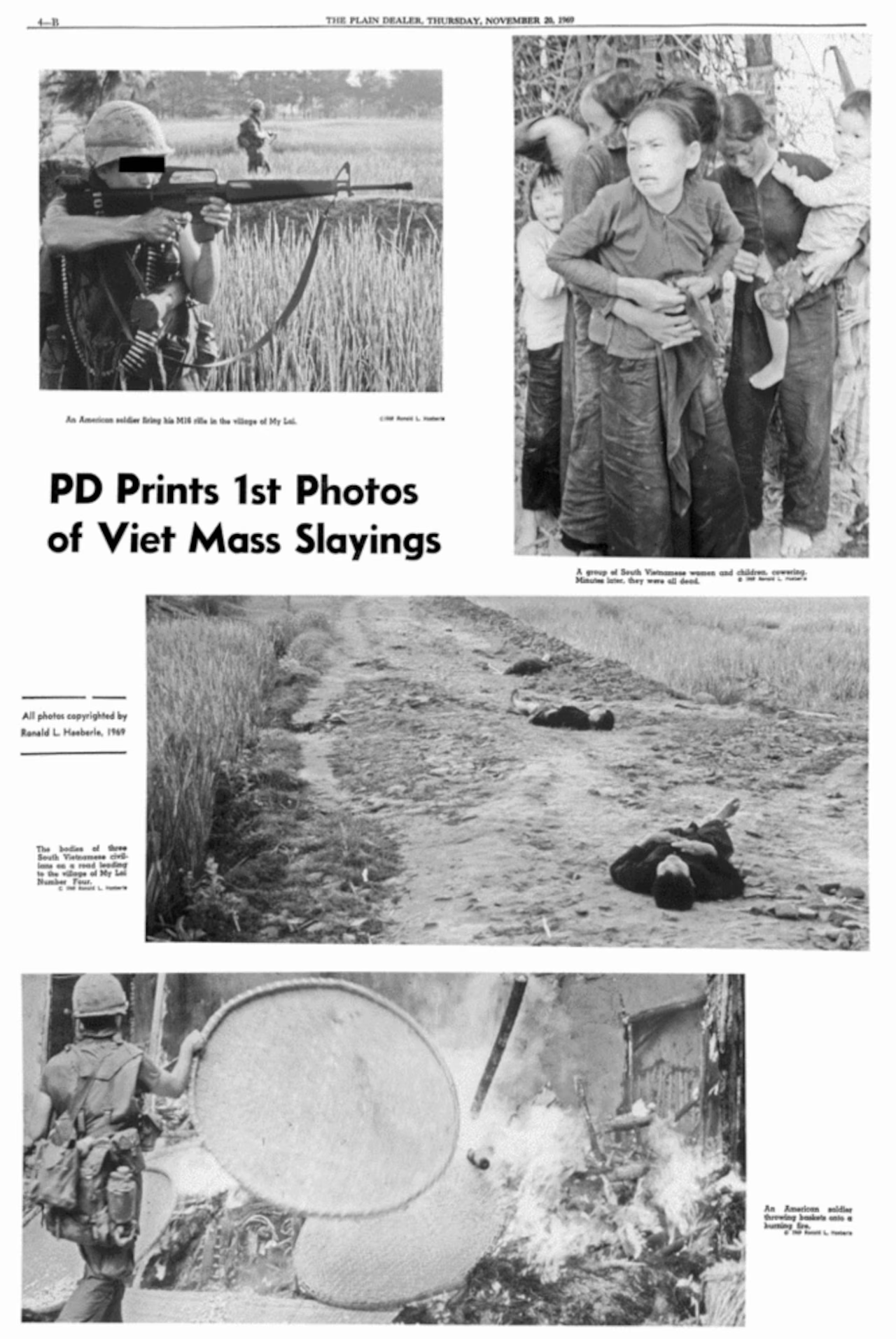
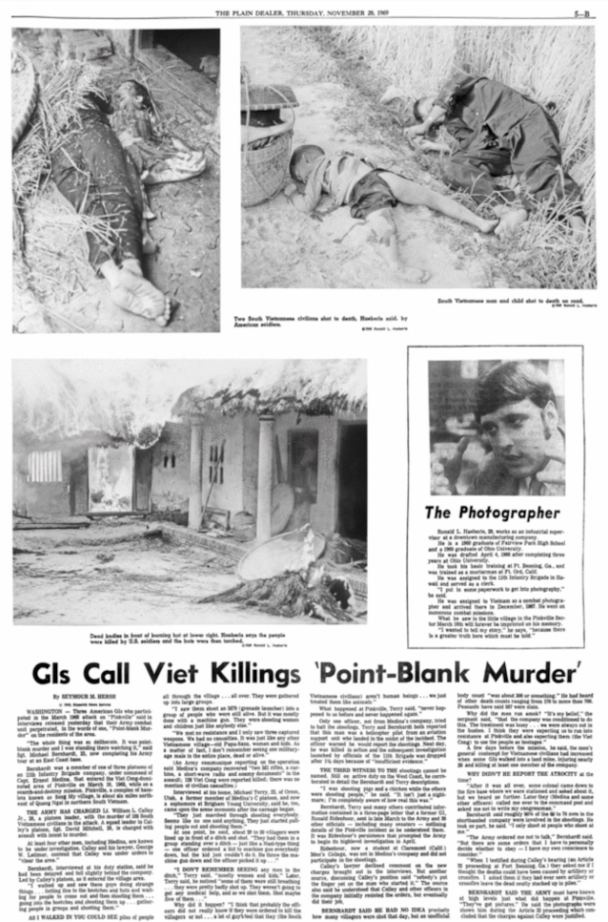
“The Plain Dealer prints first photos of Vietnam mass slayings” The Cleaveland Plain Dealer, Page 2 & 3
"I had emotional feelings. I felt nauseated to see people treated this way. American GIs were supposed to be protecting people and rehabilitating them and I had seen that. But this was incredible. I watched it and it wouldn't sink in. I left the village around 11 o'clock that morning. I saw clumps of bodies, and I must have seen as many as a hundred killed. It was done very businesslike."
-Ronald Haeberle, interview with Plain Dealer reporter Joseph Eszterhas, November 1969